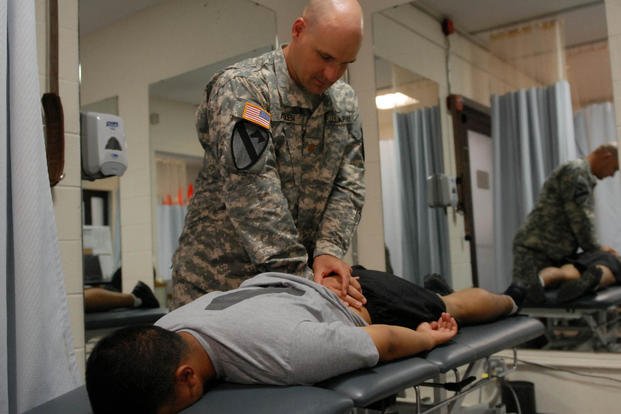Our back side (posterior) of the body sustains a majority of injuries, mainly because we neglect major muscle groups such as the rear deltoids/upper back, lumbar region (lower back) and hamstrings. These three weak spots create an imbalance of strength and flexibility and lead to the three most common injuries in active and inactive people: shoulder, back and knee injuries.
Here is a question that requires a long answer, as lower back pain can stem from many causes:
Why do lower back muscles get tight in the morning? What things should I be considering before going ahead? A little advice would go a long way right now. Thanks.
Assuming stiffness and not injury, there are many reasons for lower-back discomfort. Could be the fact you were on your feet all day or lifting heavy objects incorrectly. I asked one of my workout partners, chiropractor Steve Erle, and he gave me a laundry list of potential causes. As Erle said, "You can either live with the pain or do something about it."
Here is a list of things he and I came up with to narrow the answer:
1. Your bed is not good. You need a firm mattress (not too soft or too hard). Your bed should form to the shape of your body.
2. The way you sleep:
- If you sleep on your belly, your lower back stays tight all night.
- If you sleep on your back, your back is allowed to relax. This supports your spine.
- If you sleep on your side, put a rolled up blanket or pillow between your knees.
3. Not staying hydrated. Sore muscles could be thirsty.
4. Weak abs and lower back muscles. You could just need to work on them more. See New Lower Back Plan.
5. Not stretching enough. Stretching keeps the pelvis and lumbar muscles and ligaments pliable, thus allowing joints to move more freely and be less susceptible to pain. Also stretch your psoas and piriformis muscles, which place stress on the spine from the inside. That causes the lumbar region to contract; these are often-neglected muscles in the lower back.
6. Not enough exercise. Beginner PT programs/lower back plan and exercises like yoga and Pilates will strengthen your core muscles, which support the lumbar spine.
7. Poor posture is a result of spinal issues, not a cause of them. If you have noticeably poor posture, you likely have a spinal problem. This is diagnosed best by a chiropractor.
From Erle: What causes back pain?
The quick answer is gravity. The spine is the main weight-bearing structure of the body and houses the central nervous system. The more you move, the more wear and tear the spine takes. Therefore, pain and injury are extremely common.
Eighty-plus percent of the world's population will experience lumbar pain at some point. Lumbar pain is the number one reason for visits to primary medical physicians and the number two reason for work absences.
You cannot avoid the effects of gravity, but you can minimize the effects of wear and tear. Low-impact activities, such as yoga, Pilates, stretching, running, resistance training and swimming, are great ways to minimize the effects of wear and tear of the spine and reduce pain. High-impact activities, like football, ruck marches, gymnastics and/or just sleeping in an improper position, can lead to chronic spinal issues.
Start a low-impact exercise program. PT, as well as other low-impact activities such as yoga, should be done daily. Be proactive in your health care. Don't wait for back pain; that's like waiting until your teeth hurt to brush them.
However, if you are like 99.9% of all people, you are going to wait until you have back pain before you'll do anything. If you wake up stiff one morning and it goes away, you are likely fine. However, if you wake up every morning this way, remember the seven most dangerous words in health care: "It will go away on its own."
It will not go away on its own, and it will get worse and be harder to fix later. If you are having back pain more than one time a week, see a doctor or chiropractor.
Stew Smith is a former Navy SEAL and fitness author certified as a Strength and Conditioning Specialist (CSCS) with the National Strength and Conditioning Association. Visit his Fitness eBook store if you're looking to start a workout program to create a healthy lifestyle. Send your fitness questions to stew@stewsmith.com.
Want to Learn More About Military Life?
Whether you're thinking of joining the military, looking for fitness and basic training tips, or keeping up with military life and benefits, Military.com has you covered. Subscribe to Military.com to have military news, updates and resources delivered directly to your inbox.




















